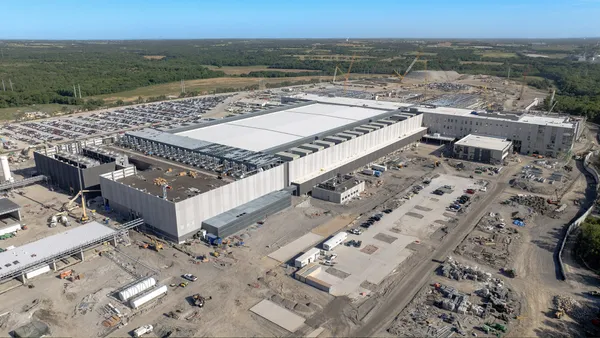AUSTIN, Texas—Introducing technology at a construction company isn’t as simple as supplying iPads and downloading “freemium” project management apps — it involves a plethora of hardware, software, people and processes and requires someone at the helm who understands how all of these interact in the construction business, Hitesh Dewan, director of technology integration at Roebbelen Contracting, told attendees at Procore’s Groundbreak 2018 conference Tuesday.
A self-styled construction technologist, Dewan said roles like his are increasingly sought out by contractors looking to ensure that their technology integrates well with the teams and processes they have in place.
His workday comprises researching new technology, vetting the products and services out there, implementing the most promising options and training end users on them. Technology aimed at the industry is moving at a breakneck pace — vendors “pop up over night” and are “evolving on a very consistent basis,” he said. A large part of the role, then, is sifting through these updates to build a comprehensive tool set, while keeping the process and the overall strategy stable.
The right tools for the right job
Anyone with a technology background can do their homework on solutions aimed at the construction industry, but only a technologist who is well versed in the nuances of delivery methods, contractual obligations, project scheduling and more can be sure to steer clear of solutions that are redundant or off the mark, Dewan suggested.
“It’s all about the right tool for the right job,” he said. “You have to understand how the process begins, how the process ends … and how things should hand off in the middle,” opting for end-to-end solutions instead of point solutions.
But even for a technologist with real-world construction expertise, this “clashing of worlds” between new technologies — like business analytics and artificial intelligence — and decades-old business practices is a tough spot to navigate, according to Dewan.
Construction companies don’t like to part with the ways they have done business, but they “are going to have to meet that new change, meet that new world, and that’s not something that is done very easily,” he said. And hardware and software aside, companies will also have to break down the silos that hamper people and processes by limiting the spread of information, Dewan added.
Backing the tech champions
Enabling this sort of technology transformation may be beyond the reach of the IT department, Dewan suggested. IT teams are essential for laying the foundation for a tech strategy to take place — Wi-Fi connectivity, network access, cloud infrastructure and more. But an outside strategist is better able to work this strategy into the business process and workflow, he said.
So where does a company go about finding someone to spearhead this transition? Large companies have the ability to tap into the growing pool of candidates that market themselves as construction technologists, Dewan said. Small companies might opt for a third-party consultant who can carry out a tech process tuneup. But perhaps a better bet is to seek out the internal tech champions, he suggested.
While they might not be the standout strategist in a pool of candidates, their internal knowledge coupled with enthusiasm for tools they see a place for within the company can serve to push the firm in the right direction.
“Recognize and reward [the] talent that is bringing that to the table for you,” Dewan said.












